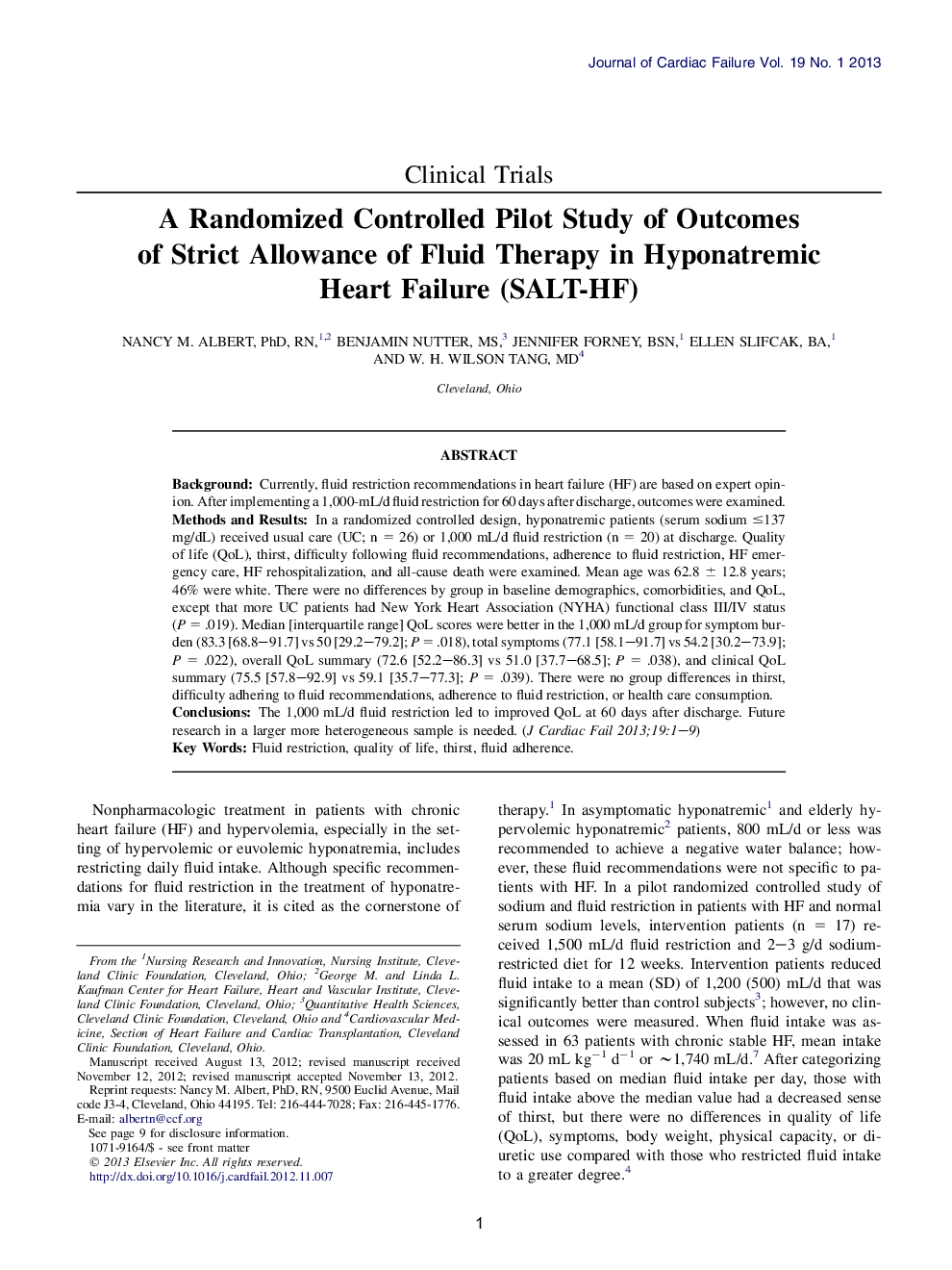| Article ID | Journal | Published Year | Pages | File Type |
|---|---|---|---|---|
| 2959473 | Journal of Cardiac Failure | 2013 | 9 Pages |
BackgroundCurrently, fluid restriction recommendations in heart failure (HF) are based on expert opinion. After implementing a 1,000-mL/d fluid restriction for 60 days after discharge, outcomes were examined.Methods and ResultsIn a randomized controlled design, hyponatremic patients (serum sodium ≤137 mg/dL) received usual care (UC; n = 26) or 1,000 mL/d fluid restriction (n = 20) at discharge. Quality of life (QoL), thirst, difficulty following fluid recommendations, adherence to fluid restriction, HF emergency care, HF rehospitalization, and all-cause death were examined. Mean age was 62.8 ± 12.8 years; 46% were white. There were no differences by group in baseline demographics, comorbidities, and QoL, except that more UC patients had New York Heart Association (NYHA) functional class III/IV status (P = .019). Median [interquartile range] QoL scores were better in the 1,000 mL/d group for symptom burden (83.3 [68.8–91.7] vs 50 [29.2–79.2]; P = .018), total symptoms (77.1 [58.1–91.7] vs 54.2 [30.2–73.9]; P = .022), overall QoL summary (72.6 [52.2–86.3] vs 51.0 [37.7–68.5]; P = .038), and clinical QoL summary (75.5 [57.8–92.9] vs 59.1 [35.7–77.3]; P = .039). There were no group differences in thirst, difficulty adhering to fluid recommendations, adherence to fluid restriction, or health care consumption.ConclusionsThe 1,000 mL/d fluid restriction led to improved QoL at 60 days after discharge. Future research in a larger more heterogeneous sample is needed.
